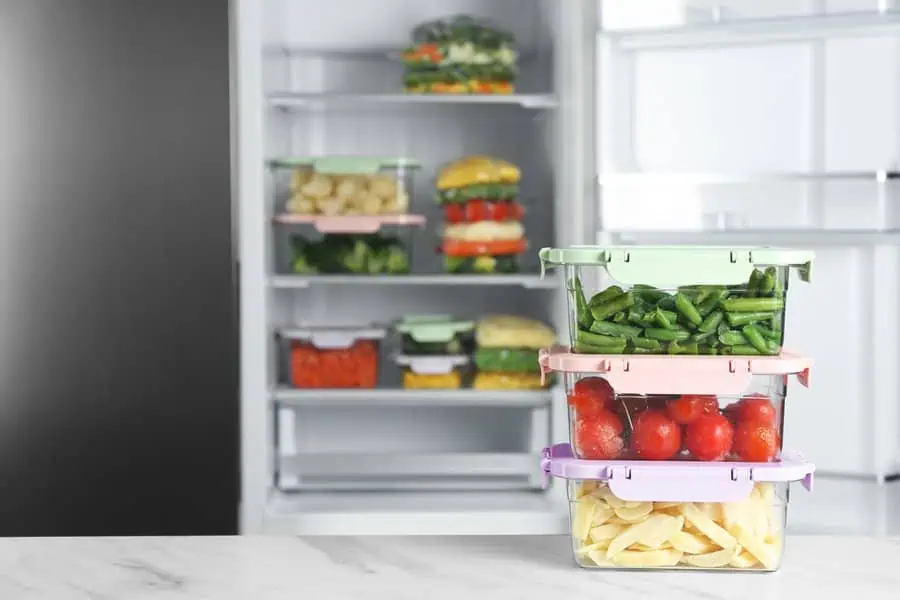
Simple Tips to Organize Your Refrigerator Like a Pro
Organizing your refrigerator is more than a chore; it’s the key to a healthier lifestyle and efficient meal prep. A well-structured fridge can save time, reduce food waste, and inspire culinary creativity. Imagine opening your fridge and effortlessly finding fresh ingredients, perfectly stored leftovers, and quick snacks — all inviting you to easily whip up delicious meals. Let’s dive into expert tips and tricks for transforming your fridge into a model of organization and efficiency.
1. Freezer Organization for Easy Meal Prep
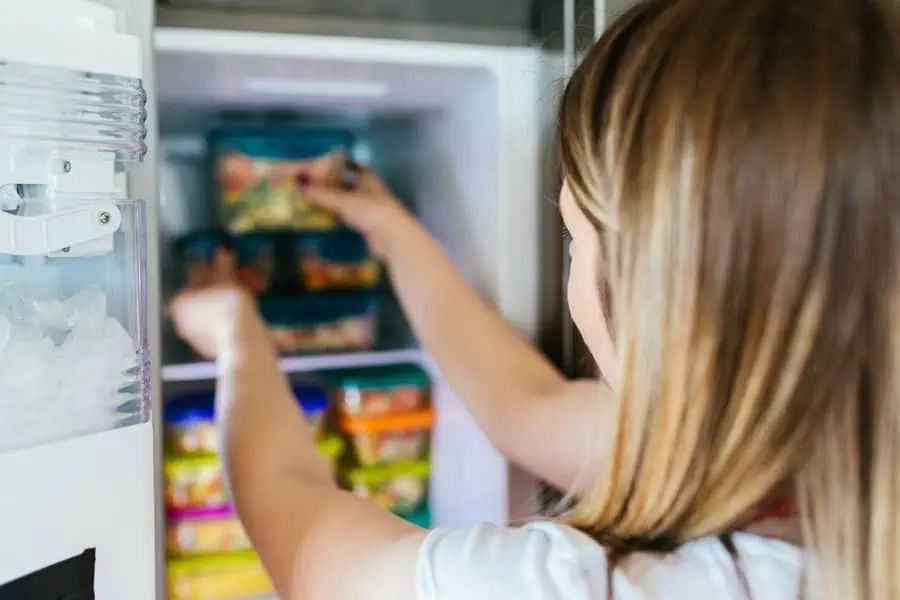
To streamline meal preparation, categorize items in your freezer. Group proteins, vegetables, and meals together, ensuring that frequently used items are easily accessible. Consider using clear bins for bulk items, allowing you to see what you have at a glance. Label everything with dates to minimize waste and ensure freshness.
2. Quick-Grab Shelf Setup
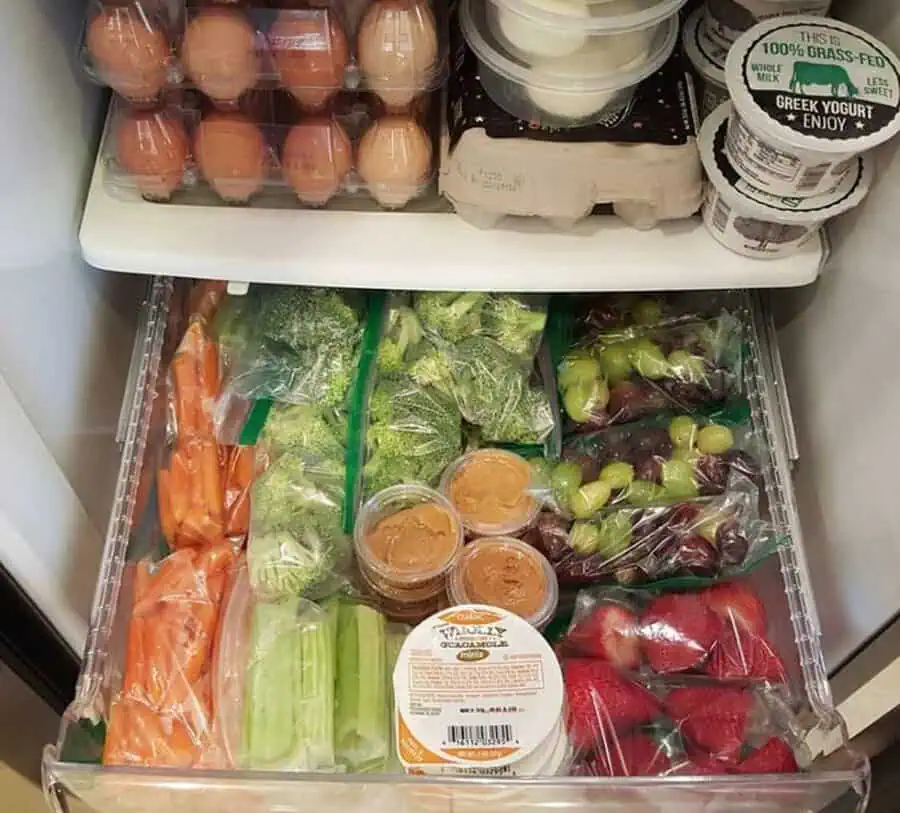
Designate a shelf for quick-grab items like snacks or ready-to-eat meals. This shelf should be at eye level for easy access. Use baskets or bins to keep similar items together, such as yogurts, cheeses, or deli meats.
3. Subzero Cooling Hacks
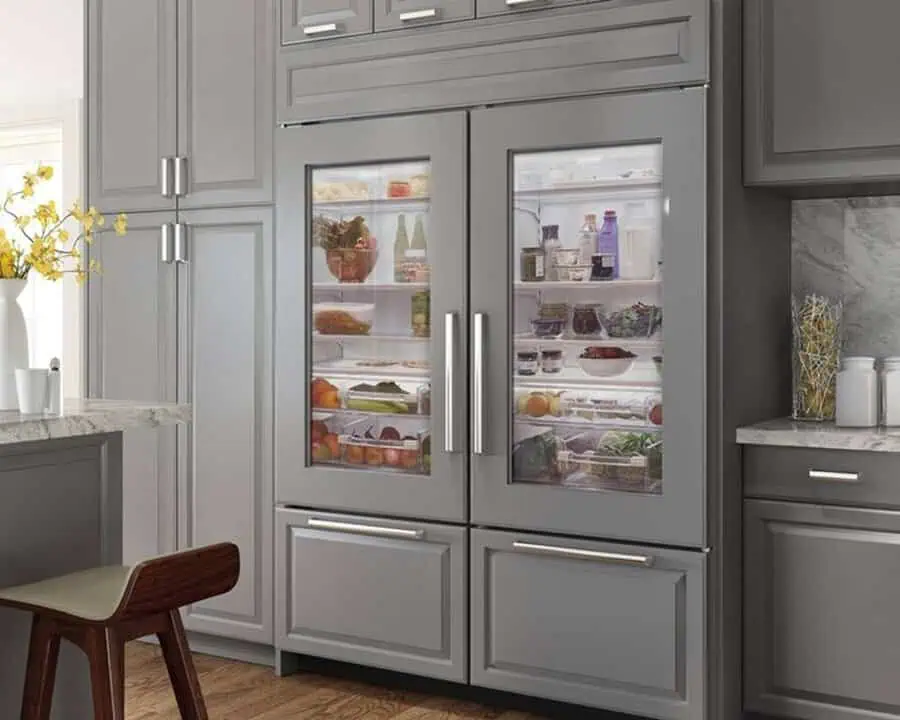
Achieving optimal cooling in your Subzero fridge can be improved by ensuring good airflow. Avoid overcrowding; this allows cold air to circulate efficiently. Regularly check and clean the coils to maintain performance. Adjust the temperature settings based on the items stored, with meats needing a colder setting than fruits and vegetables.
4. Best Storage Containers
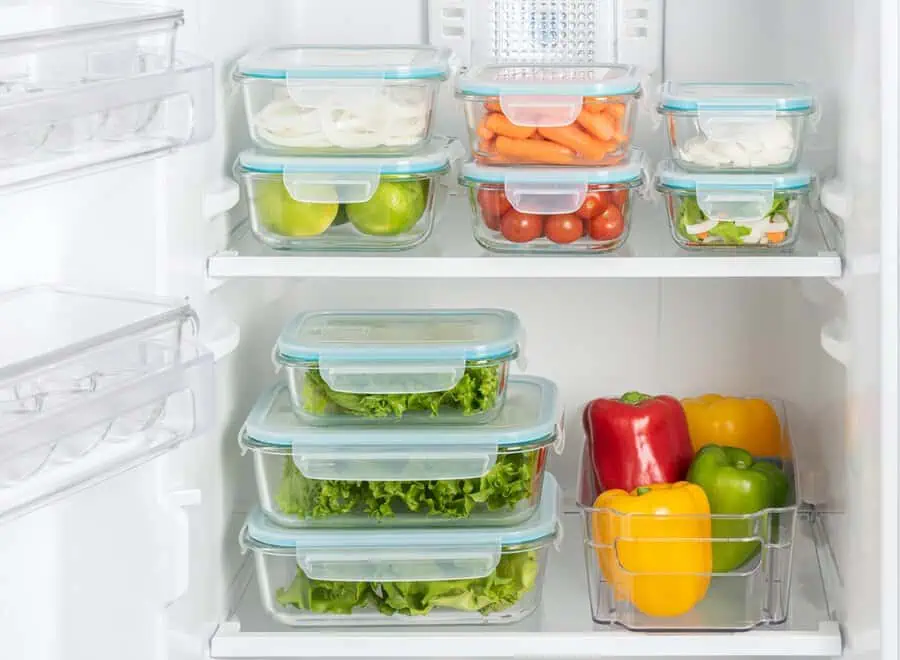
Choose containers that are airtight and BPA-free to maintain freshness. Glass containers are excellent for visibility and can be easily heated, while stackable plastic containers can save space. Consider using varying sizes for different food types and ensure that lids fit tightly. This helps prevent spills and cross-contamination.
5. Healthy Food Zone Setup
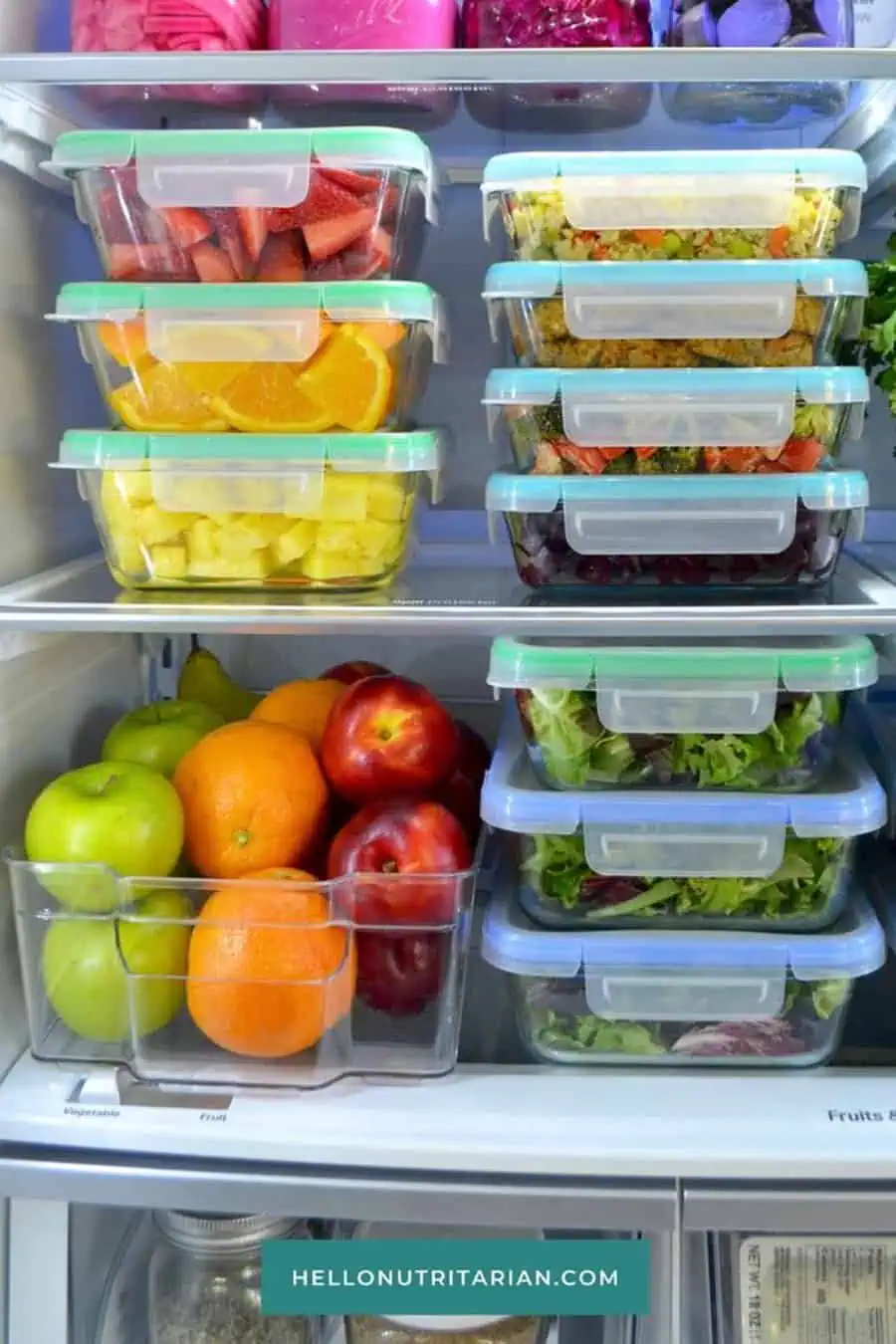
Establish a dedicated area in your fridge for healthy foods, such as fruits, vegetables, and whole grains. Keep these items at eye level to encourage healthy snacking. Consider using clear containers to make it easy to spot nutritious options quickly. By minimizing barriers to access, you’re more likely to reach for these foods.
6. Extend Vegetable Freshness

To prolong the freshness of vegetables, store them in the crisper drawer, which maintains optimal humidity. Use perforated bags or containers that allow airflow while retaining moisture. Keep ethylene-producing fruits, like apples and bananas, separate from vegetables to prevent premature spoilage.
7. Smart Safety Tips
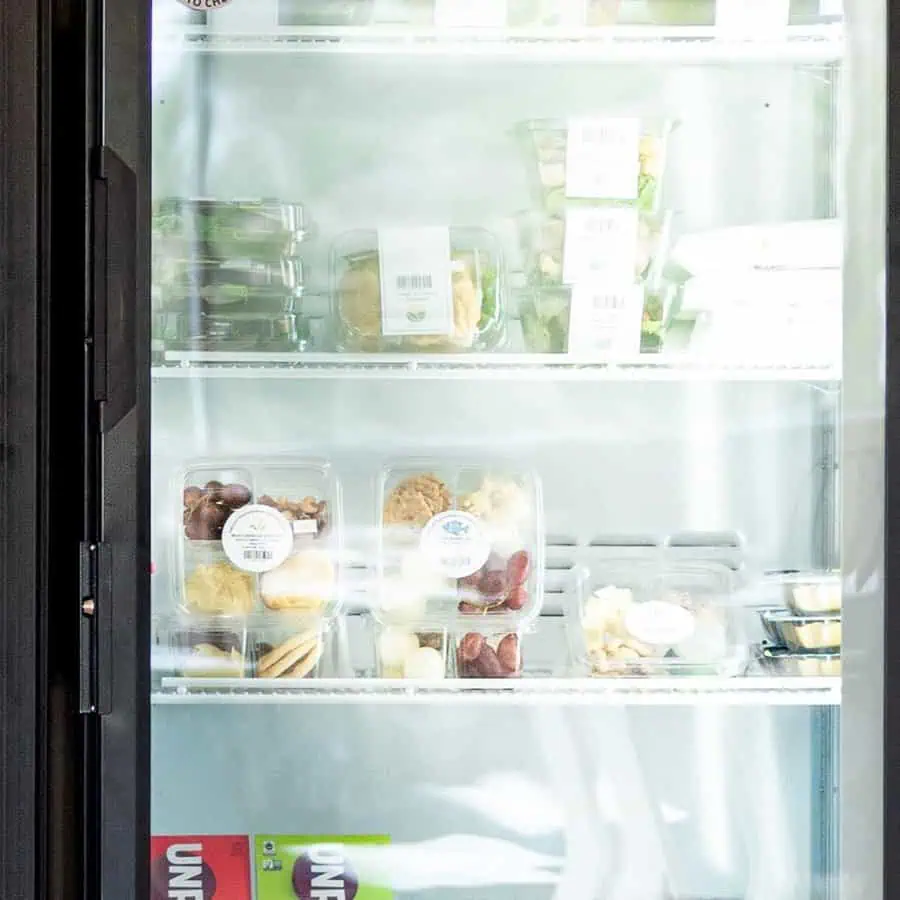
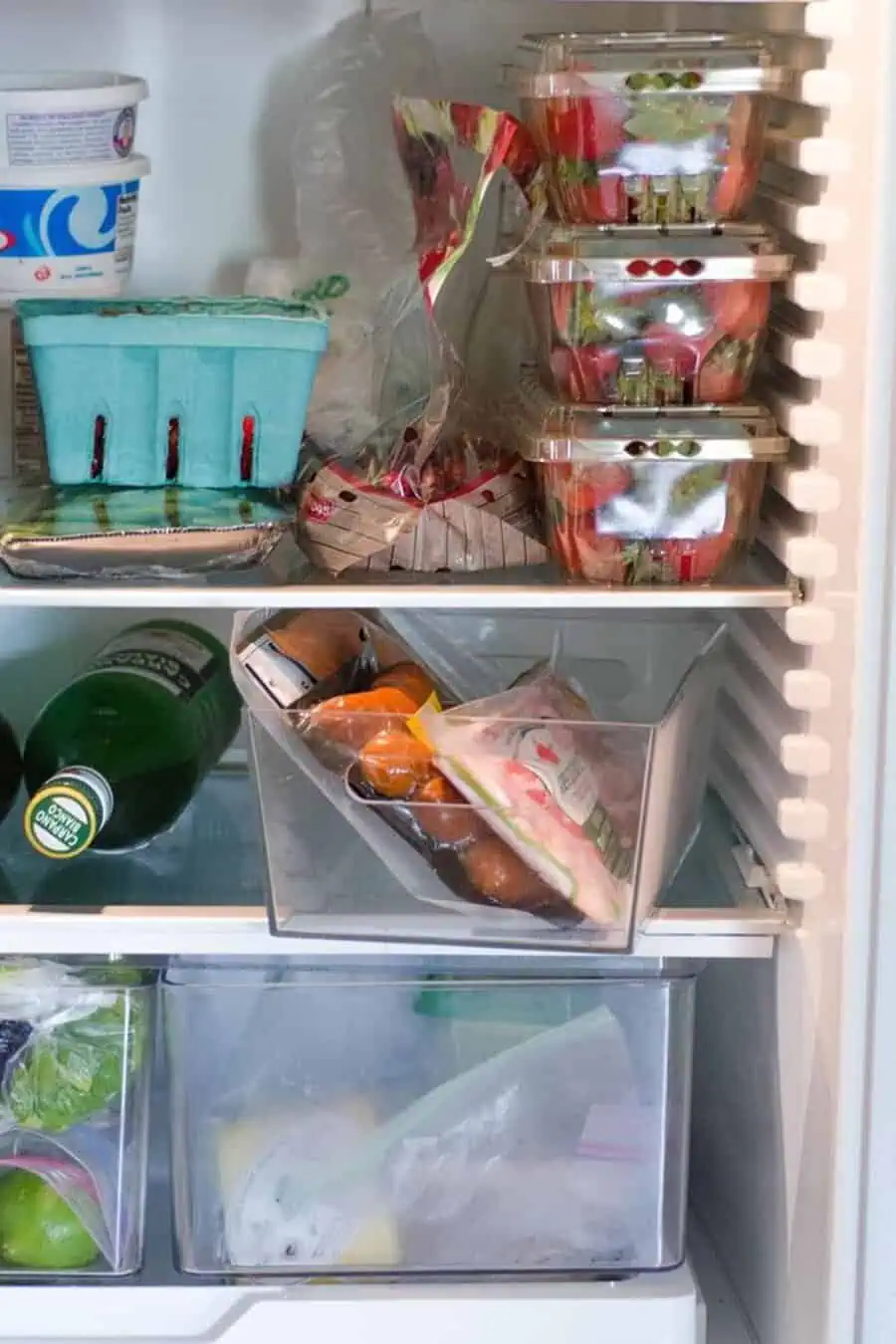
Regularly check the temperature settings of your fridge to ensure they remain below 40°F (4°C) for food safety. Periodically inspect the expiration dates of items and discard anything that has gone bad. Store raw meats at the bottom to prevent drips onto other foods. Implement a first-in, first-out system to use older items first.
8. Optimize Shelves for Cooling
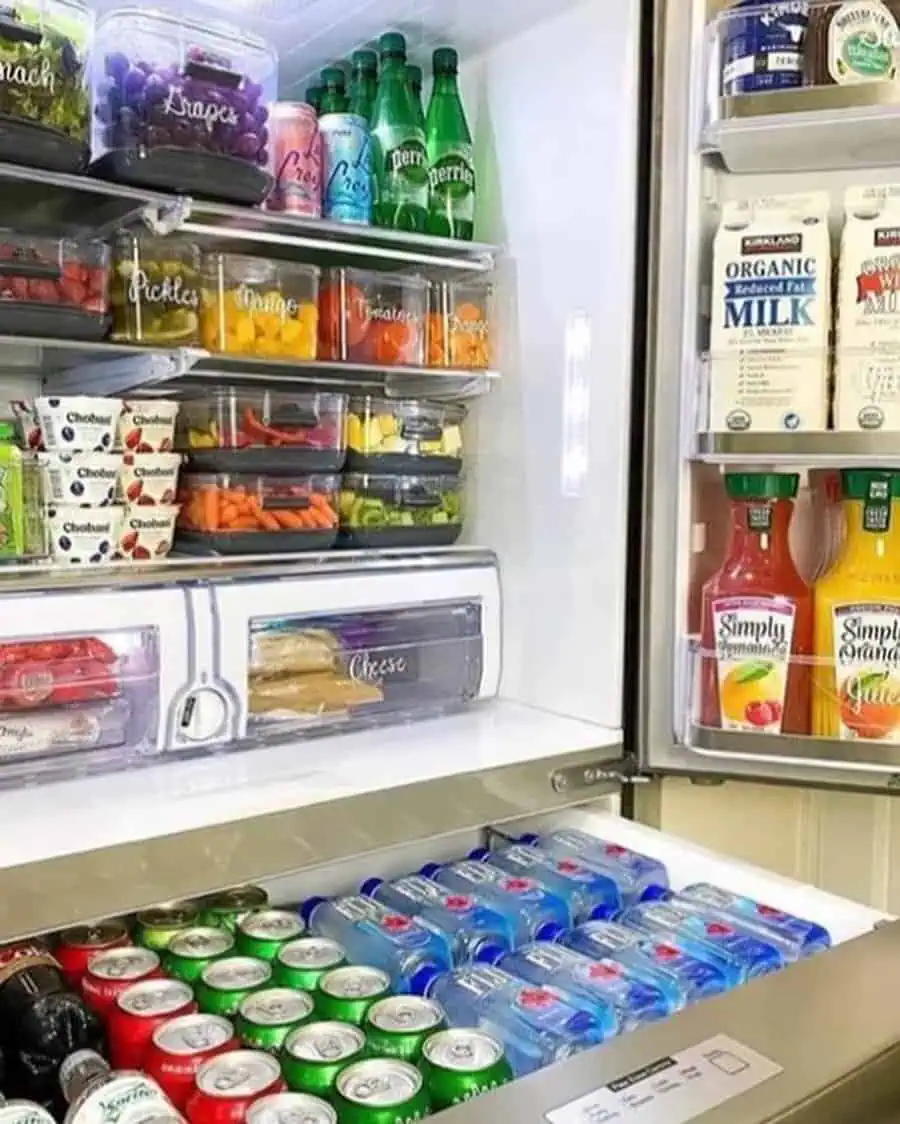
Adjusting your shelves can significantly impact the cooling efficiency of your fridge. Place frequently used items on upper shelves, where temperatures tend to be more consistent. Reserve lower shelves for dairy and beverages, as these areas are typically colder. Consider using shelf risers to maximize vertical space.
9. Subzero Cold Zones
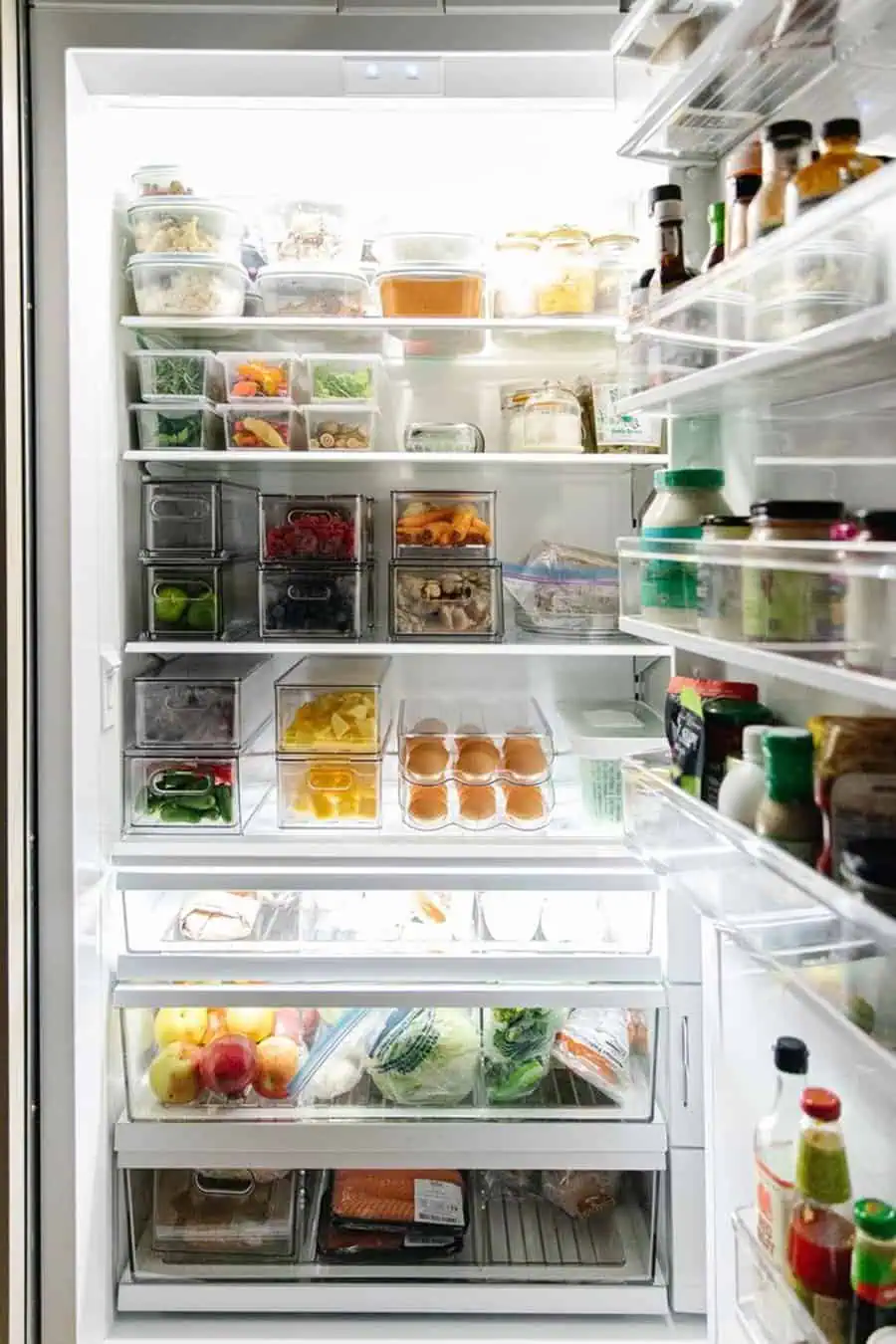
Understanding the unique cold zones of your Subzero fridge is crucial for food preservation. The back of the fridge is typically colder, making it ideal for items that require extra chill. Utilize the middle shelves for everyday items and reserve the doors for condiments, which do not require as much cooling.
10. Perfect Containers for Meal Prep
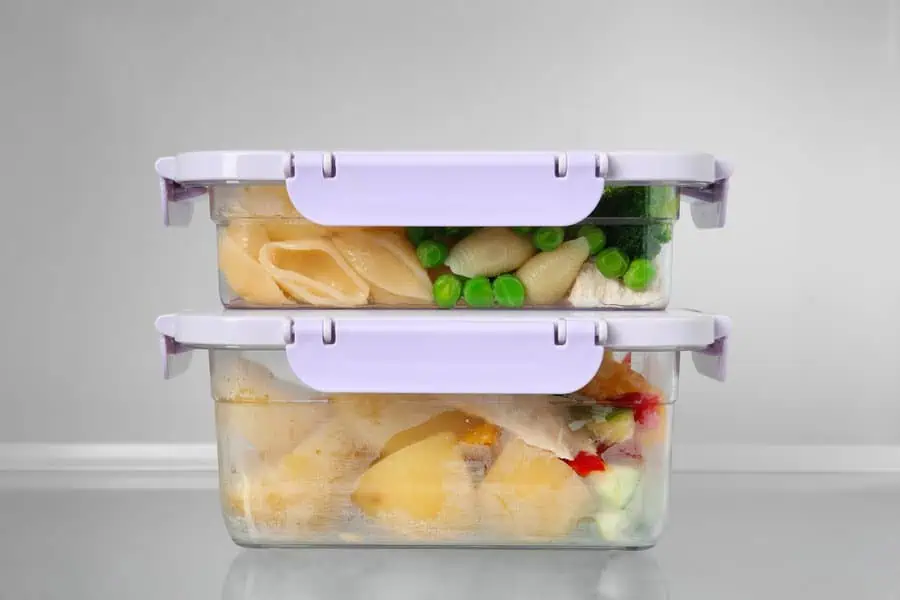
Invest in meal prep containers that are microwave-safe and stackable. Glass or high-quality plastic options are ideal for retaining flavors and moisture. Choose containers with divided sections for balanced meals, allowing you to store proteins, grains, and vegetables together without mixing flavors.
11. Maximize Vegetable Storage
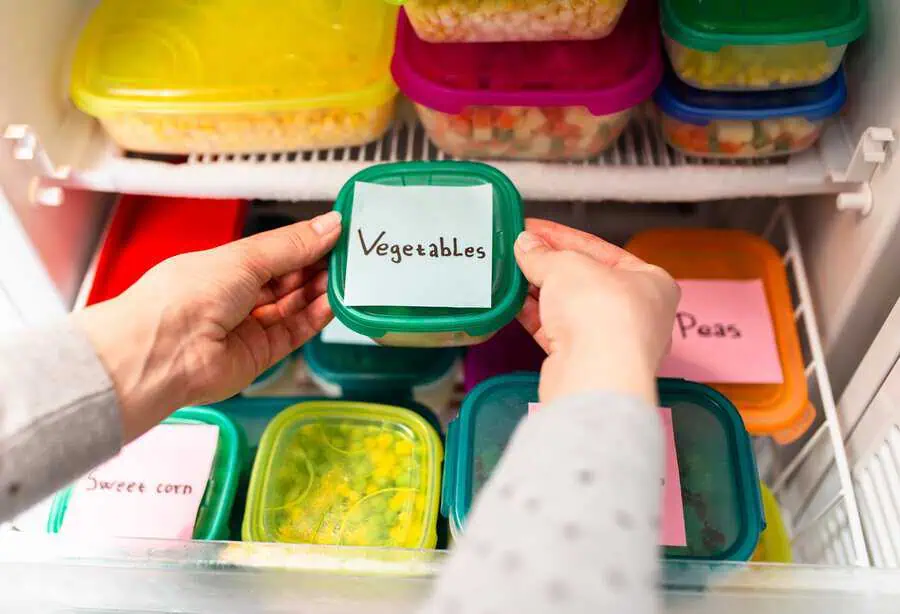
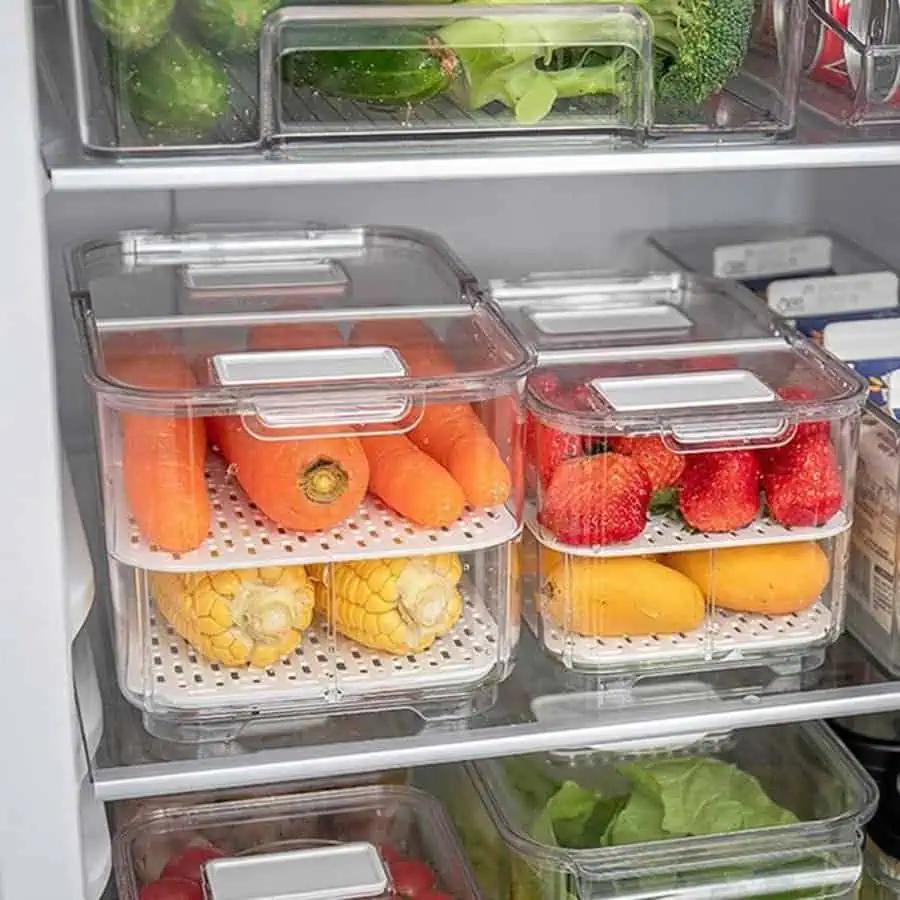
To get the most out of your vegetable storage, use the crisper drawer effectively. Make sure to separate leafy greens from harder vegetables like carrots and bell peppers, as they require different humidity levels. Regularly check for spoilage and remove any bad items to prevent them from affecting others.
12. Label and Sort Your Freezer
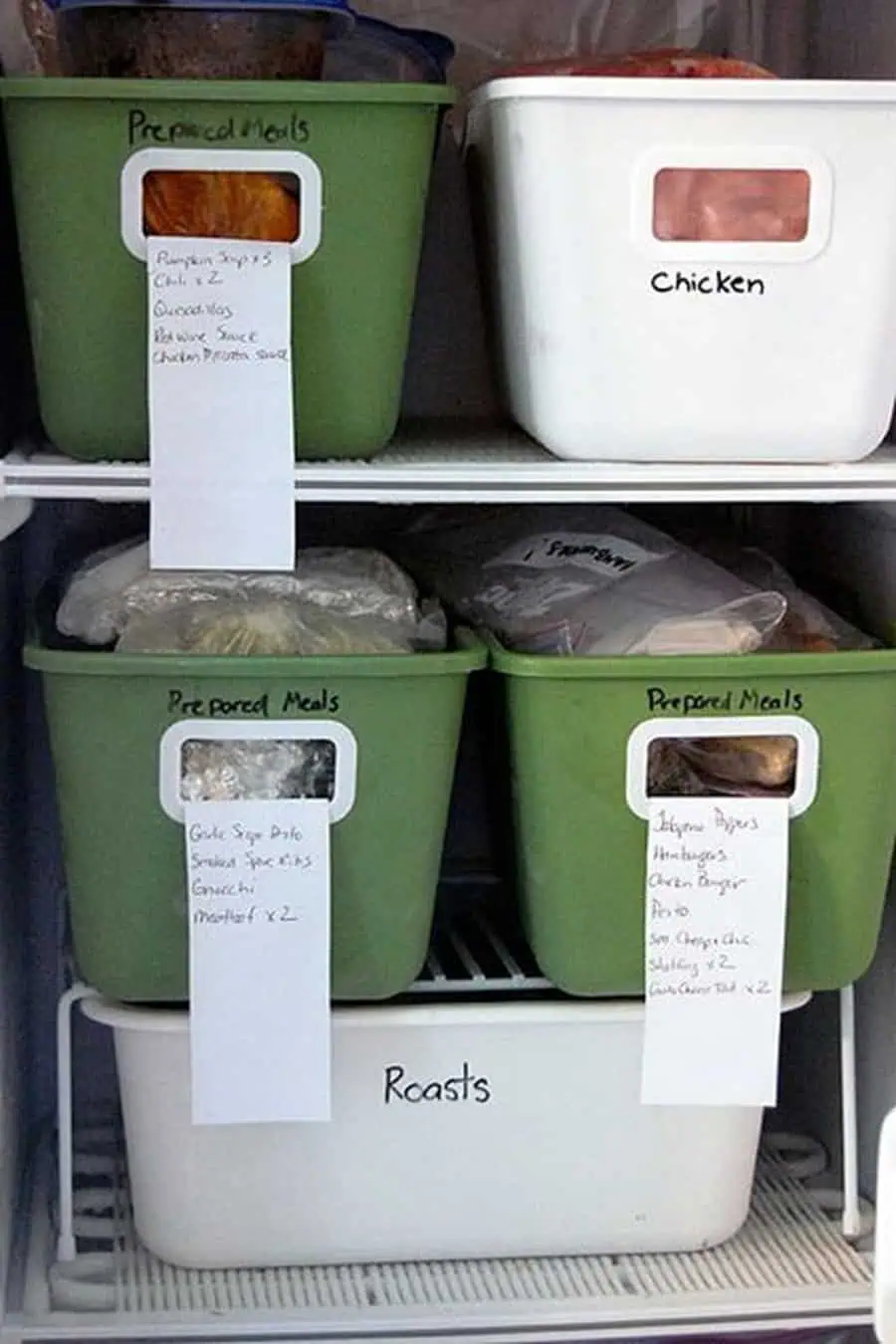
Labeling bins in your freezer helps maintain organization and reduces time spent searching for items. Use waterproof labels that can withstand moisture and cold. Sort food by categories like proteins, meals, and snacks, which aids in quick retrieval during meal prep.
13. Pantry-to-Fridge Storage
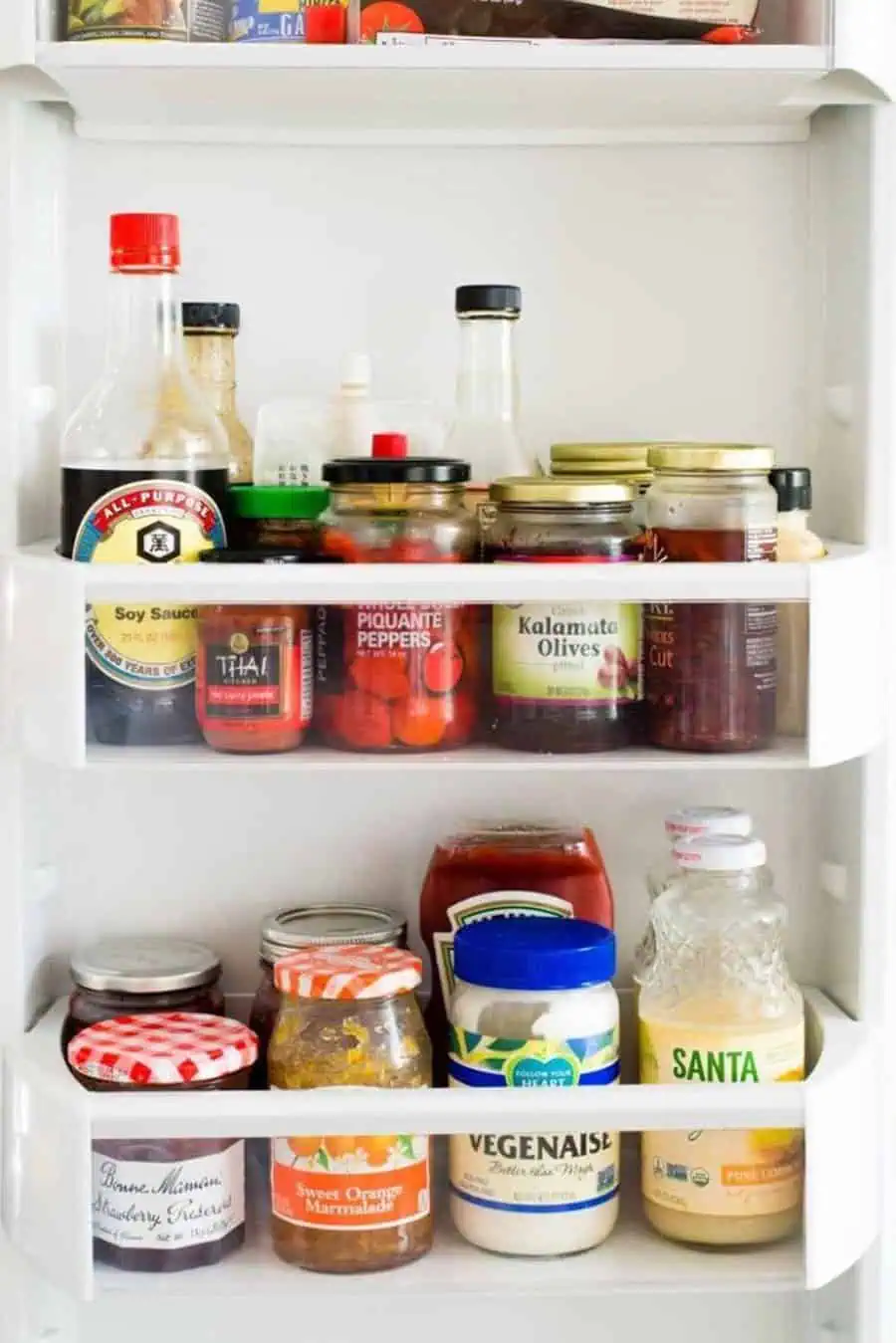
For items like fresh herbs or certain condiments, transferring them from the pantry to the fridge can extend shelf life. Keep opened jars of sauces or spreads in the fridge to prevent spoilage. Ensure that items stored in the fridge are within easy reach and visible to encourage use.
14. Safe Leftover Storage
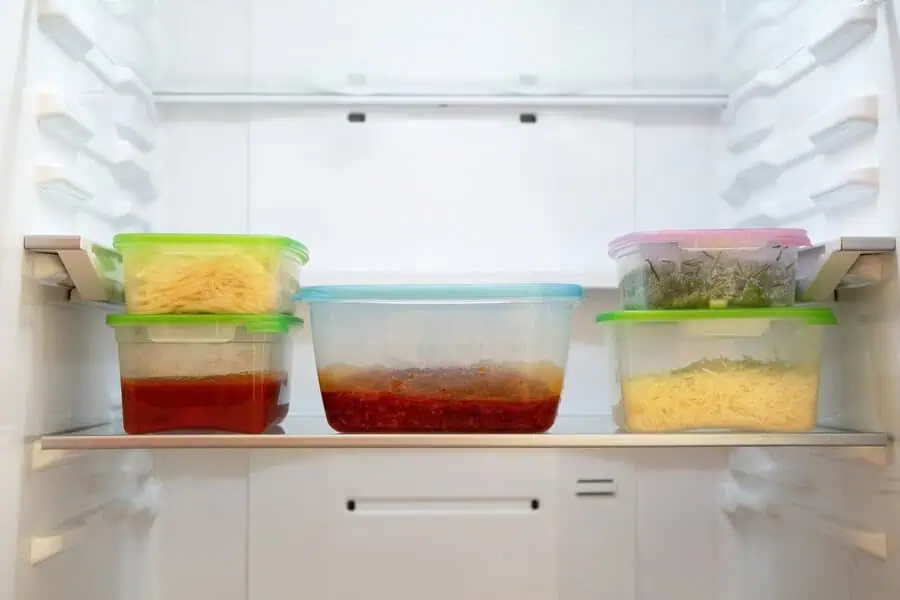
When storing leftovers, cool them to room temperature before placing them in the fridge to prevent raising the internal temperature. Use airtight containers to keep odors and moisture contained. Label containers with the date to ensure you consume them while fresh.
15. Freezer Door Organization
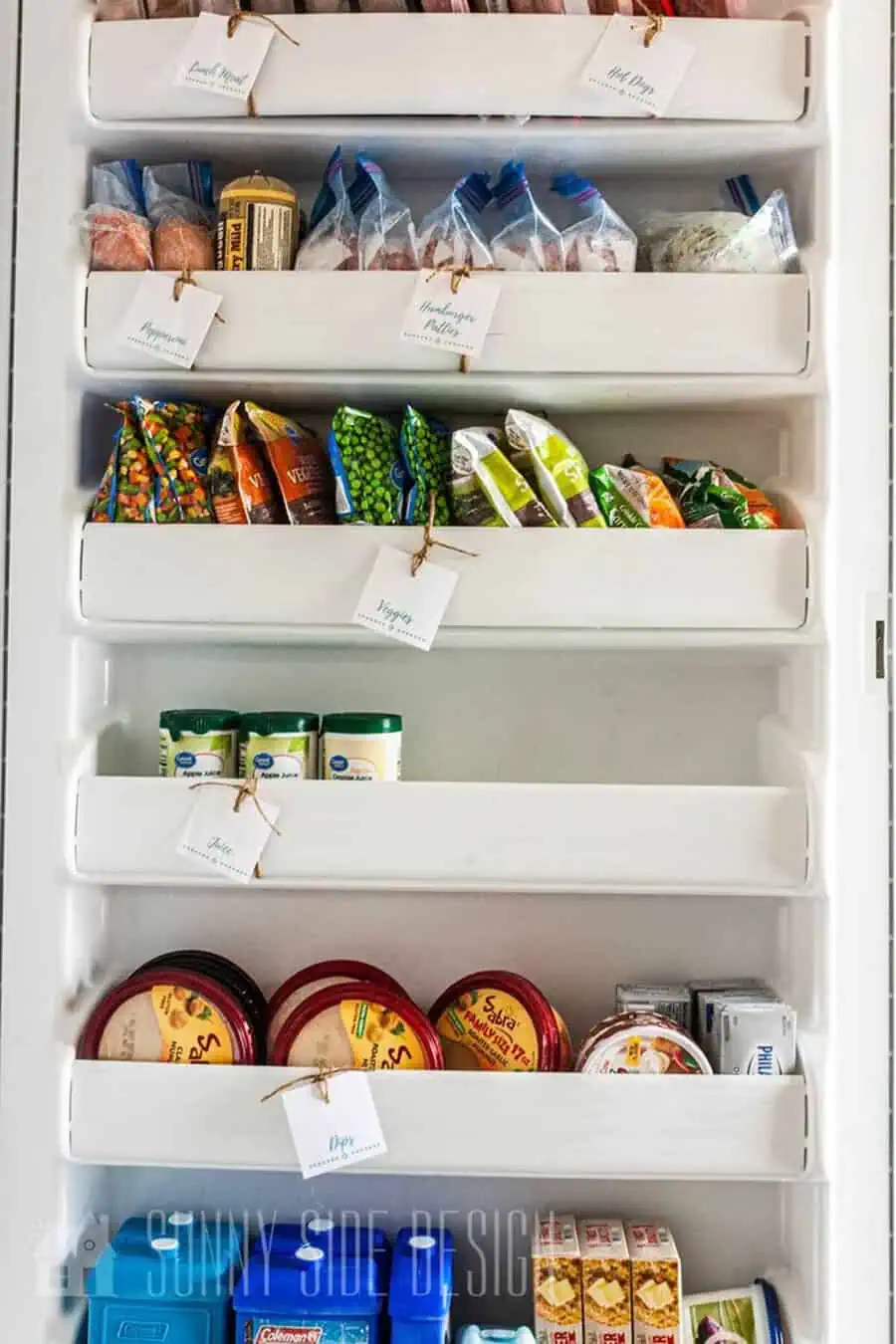
The freezer door is best used for items that are less sensitive to temperature fluctuations, like frozen herbs or ice packs. Store quick snacks or smaller items here to minimize the time the door is open when retrieving more commonly used items from the main compartment.
16. Food Safety Musts

Food safety is paramount in fridge organization. Regularly clean your fridge to prevent bacteria buildup. Store foods in the right containers, and avoid keeping leftovers longer than a week. Familiarize yourself with food storage guidelines to ensure you are maximizing safety and freshness.
